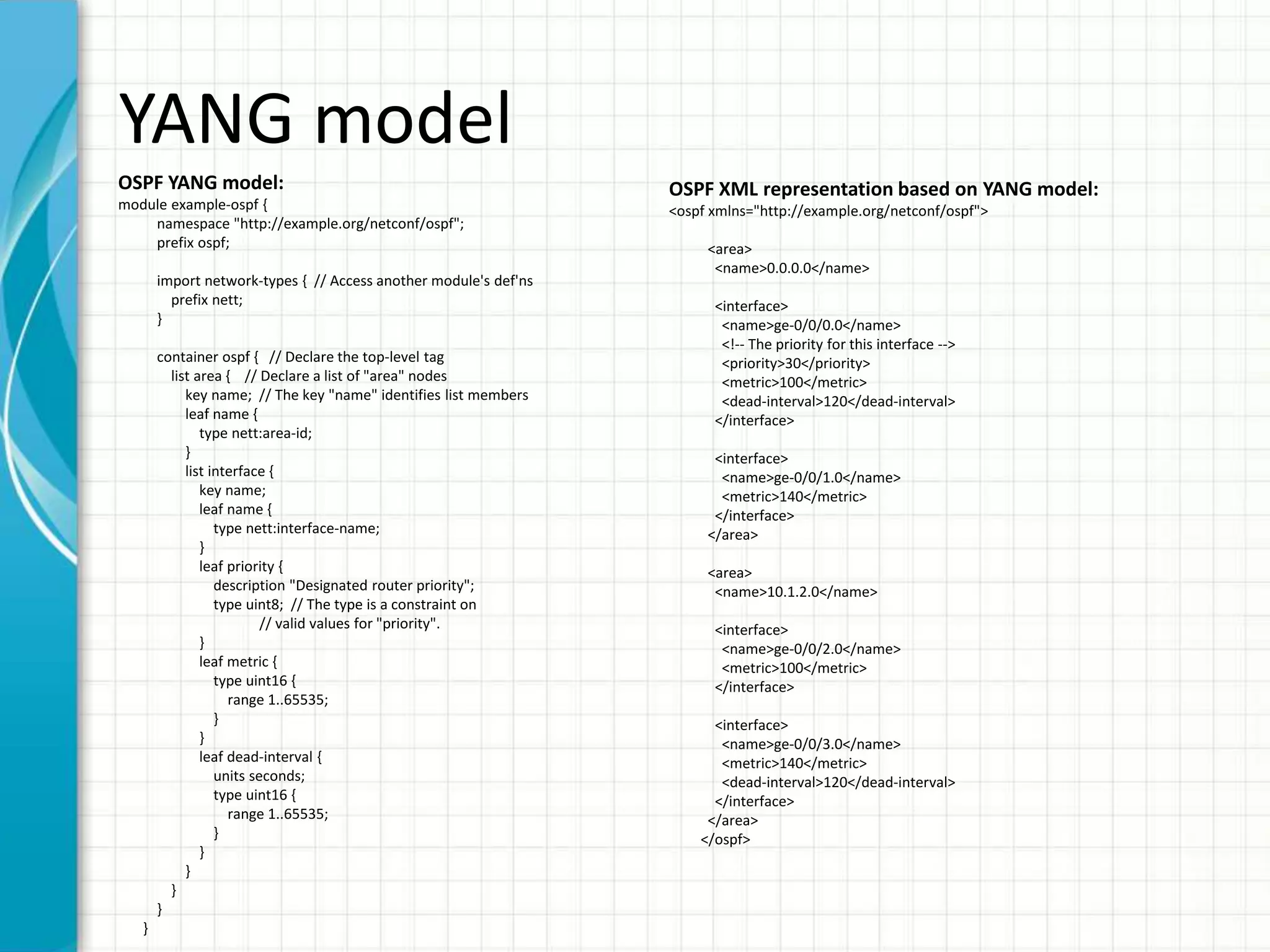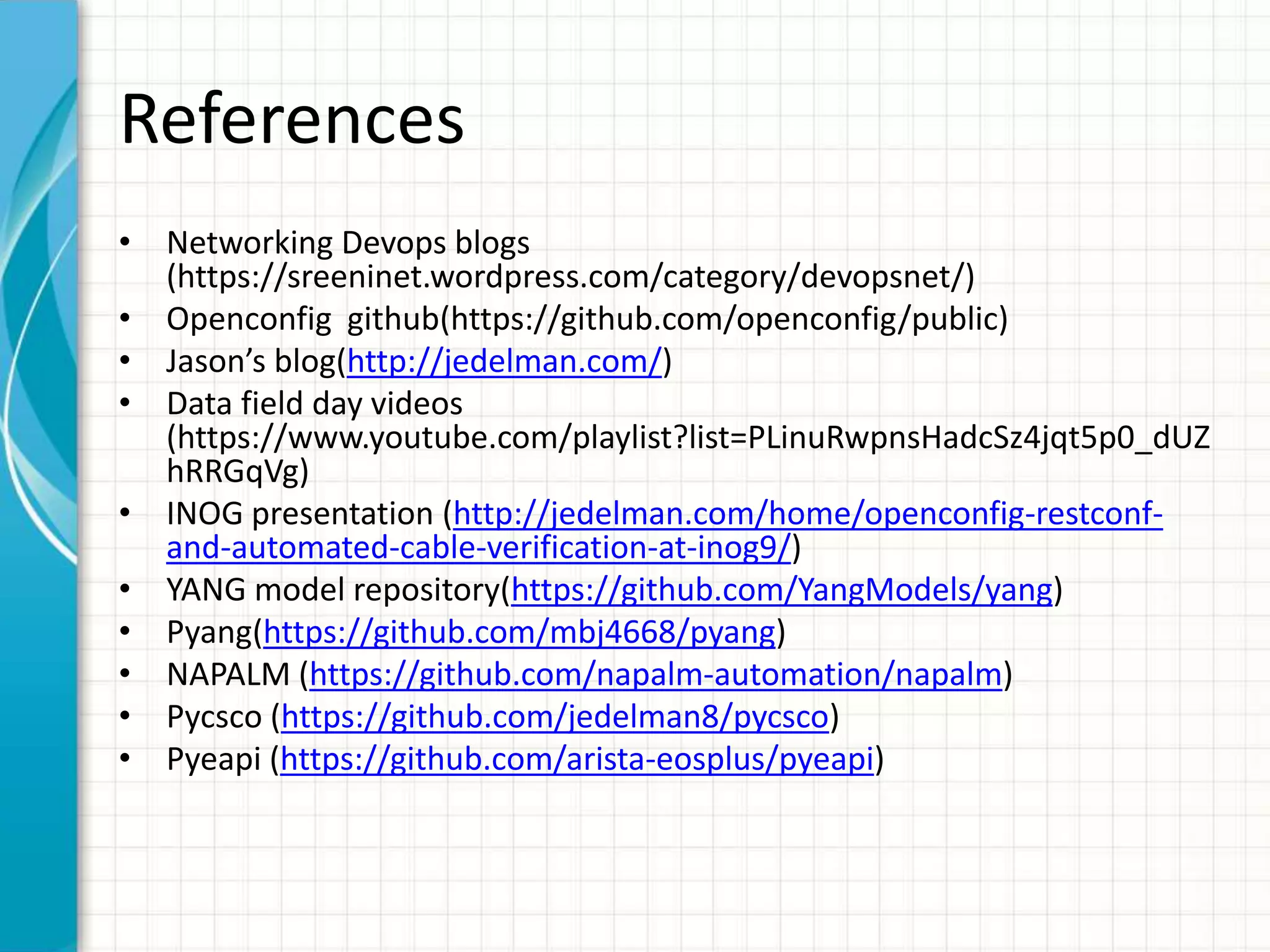This document discusses DevOps in networking and provides examples of using Python libraries and Ansible to programmatically configure and monitor network devices. It describes motivations for DevOps in networking like SDN technologies, availability of network automation tools, and cloud networking. Use cases presented include configuration of L2/L3 protocols and services and network monitoring. The document also discusses network APIs, models like YANG, and tools like Ansible, Python, and protocol standards. An example demonstrates using the PyEAPI Python library to read and create VLANs on an Arista switch and using Ansible to get LLDP neighbors from a Cisco device.
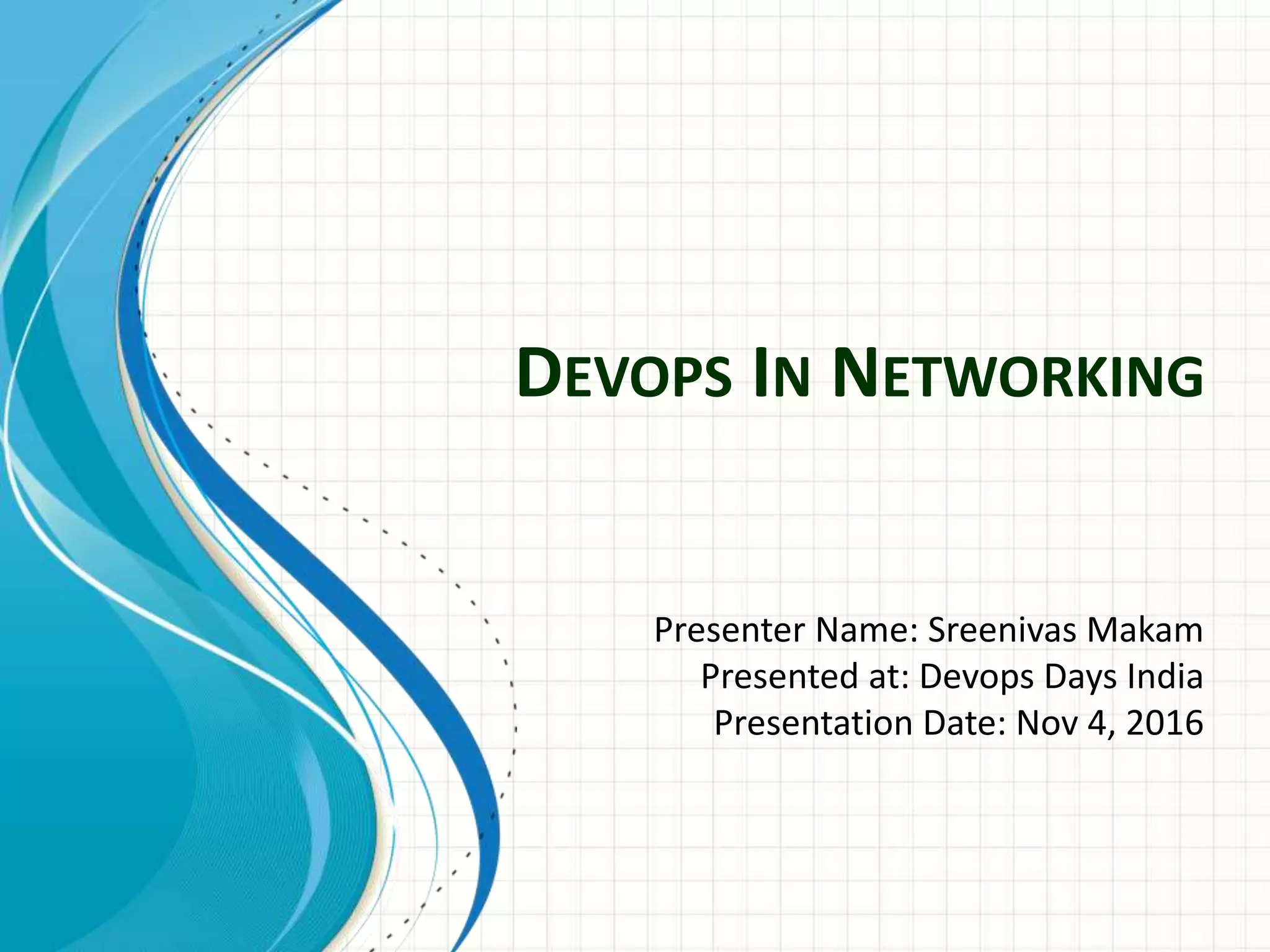
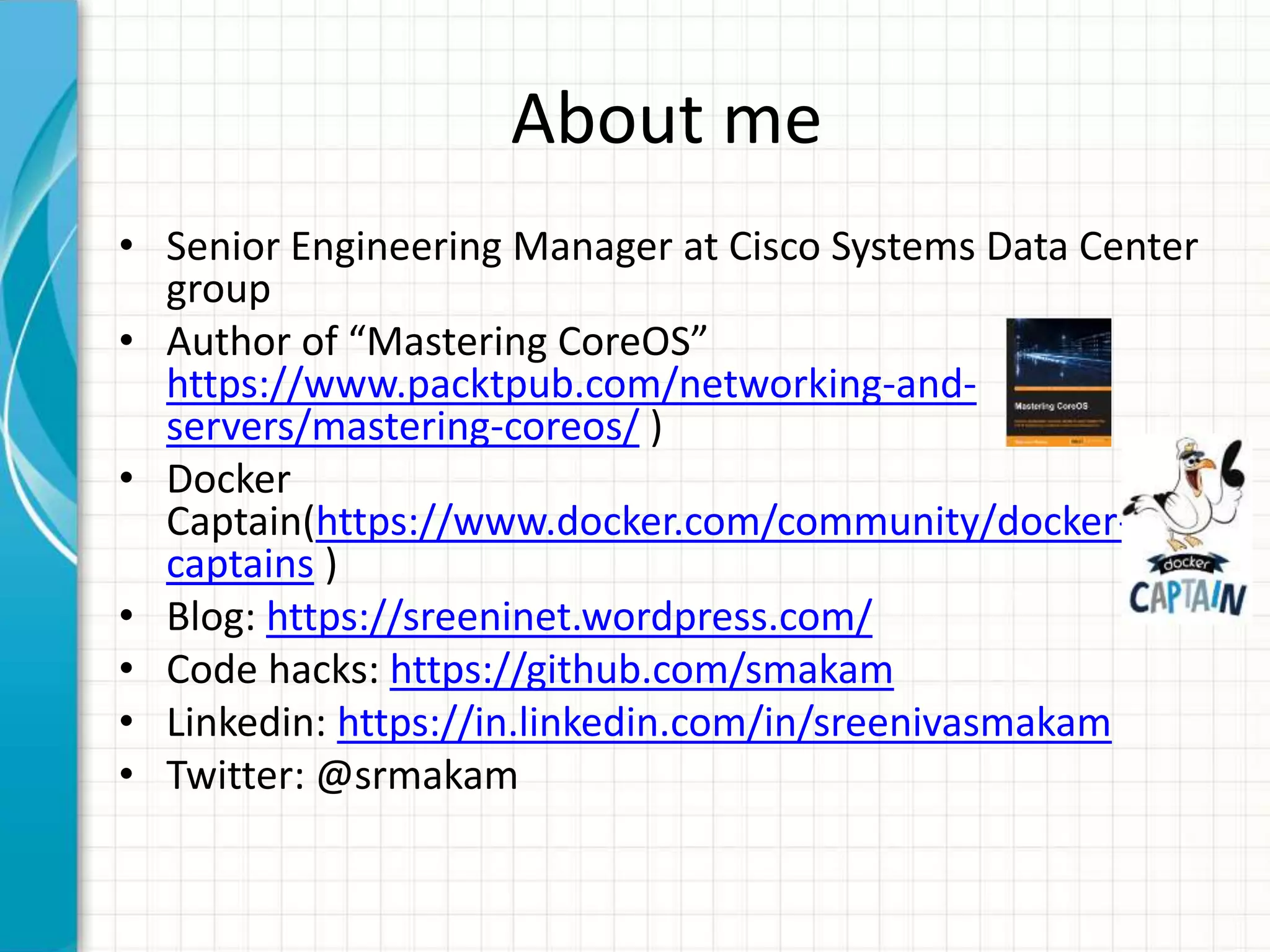
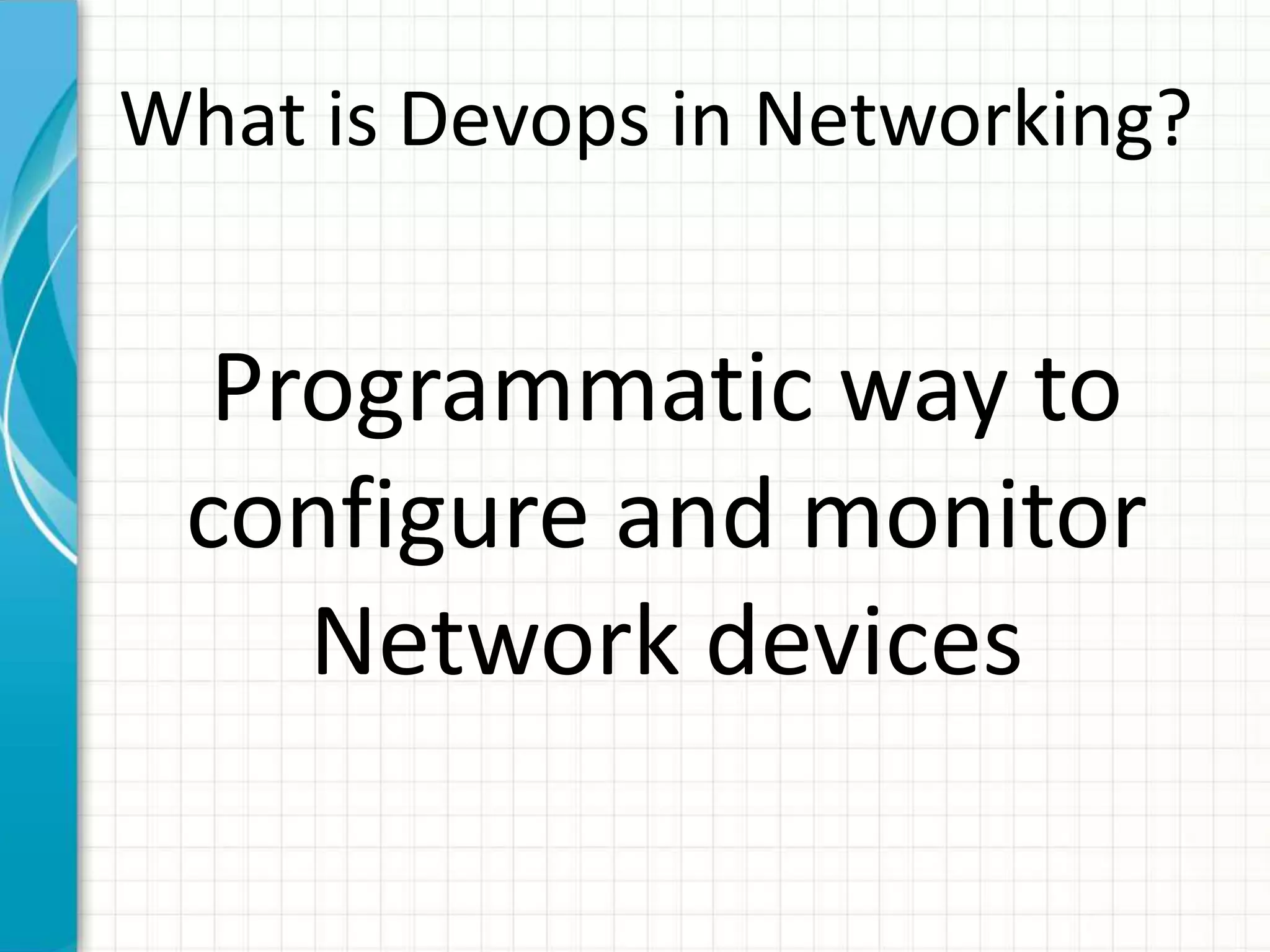
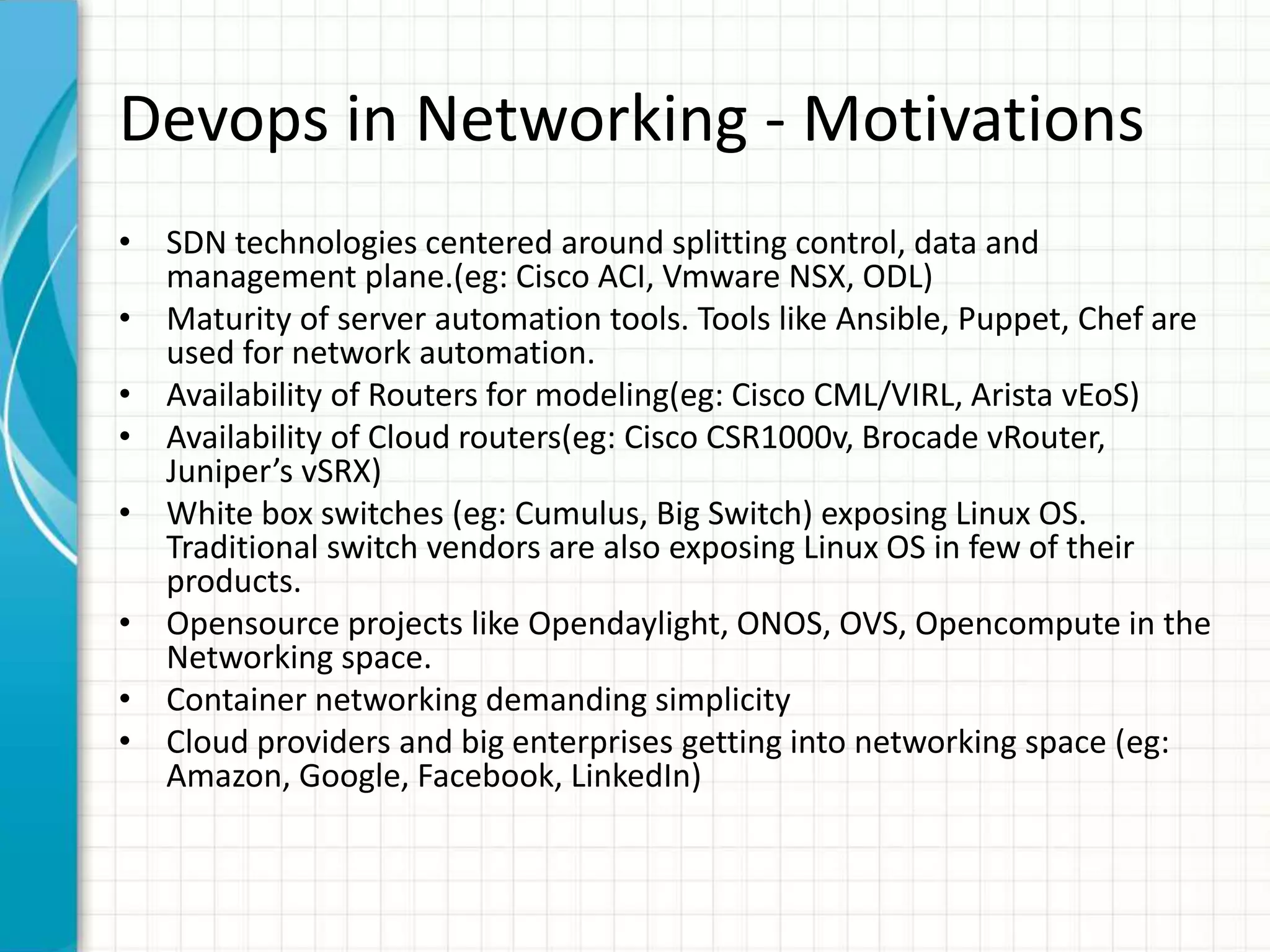
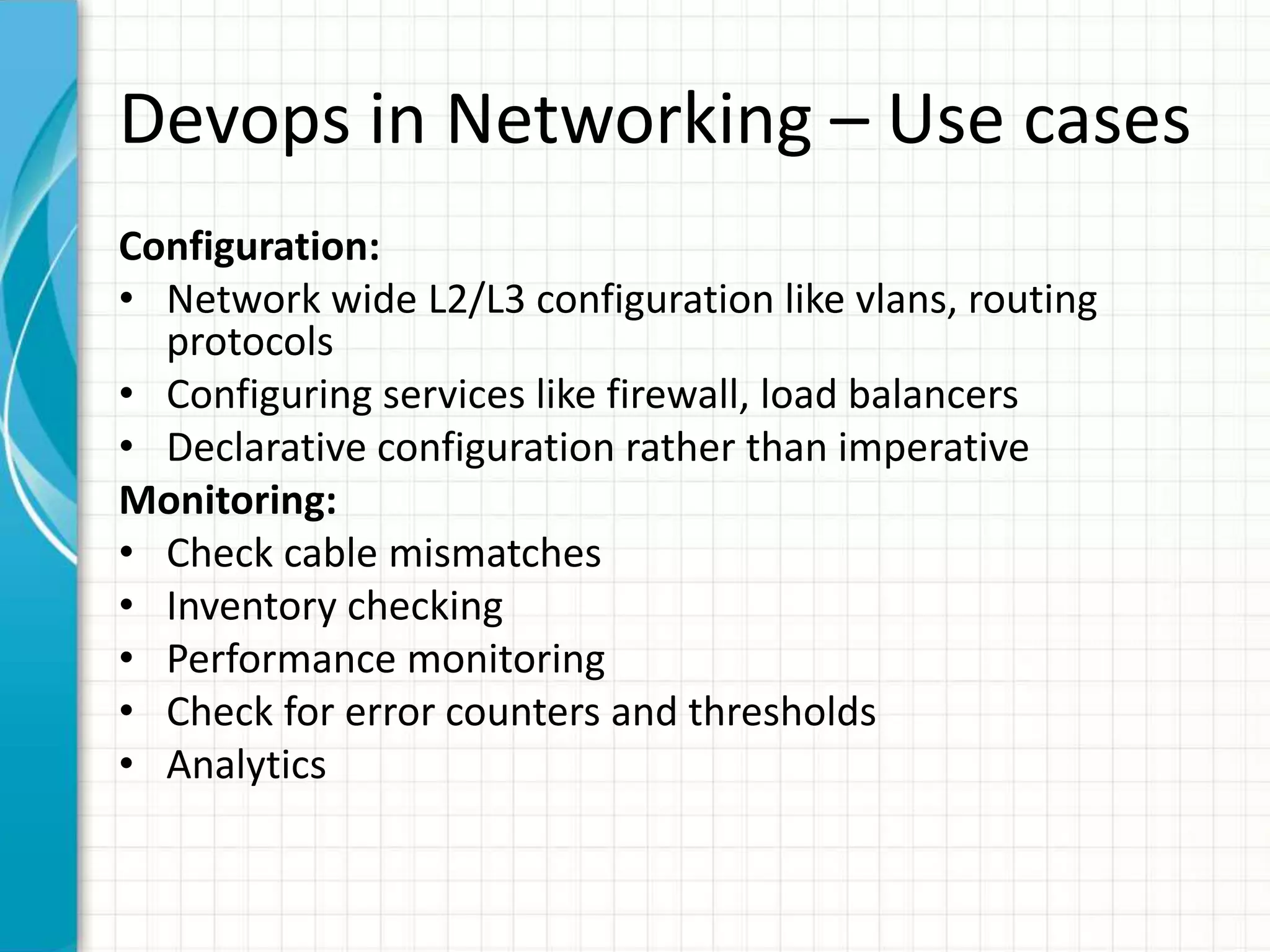
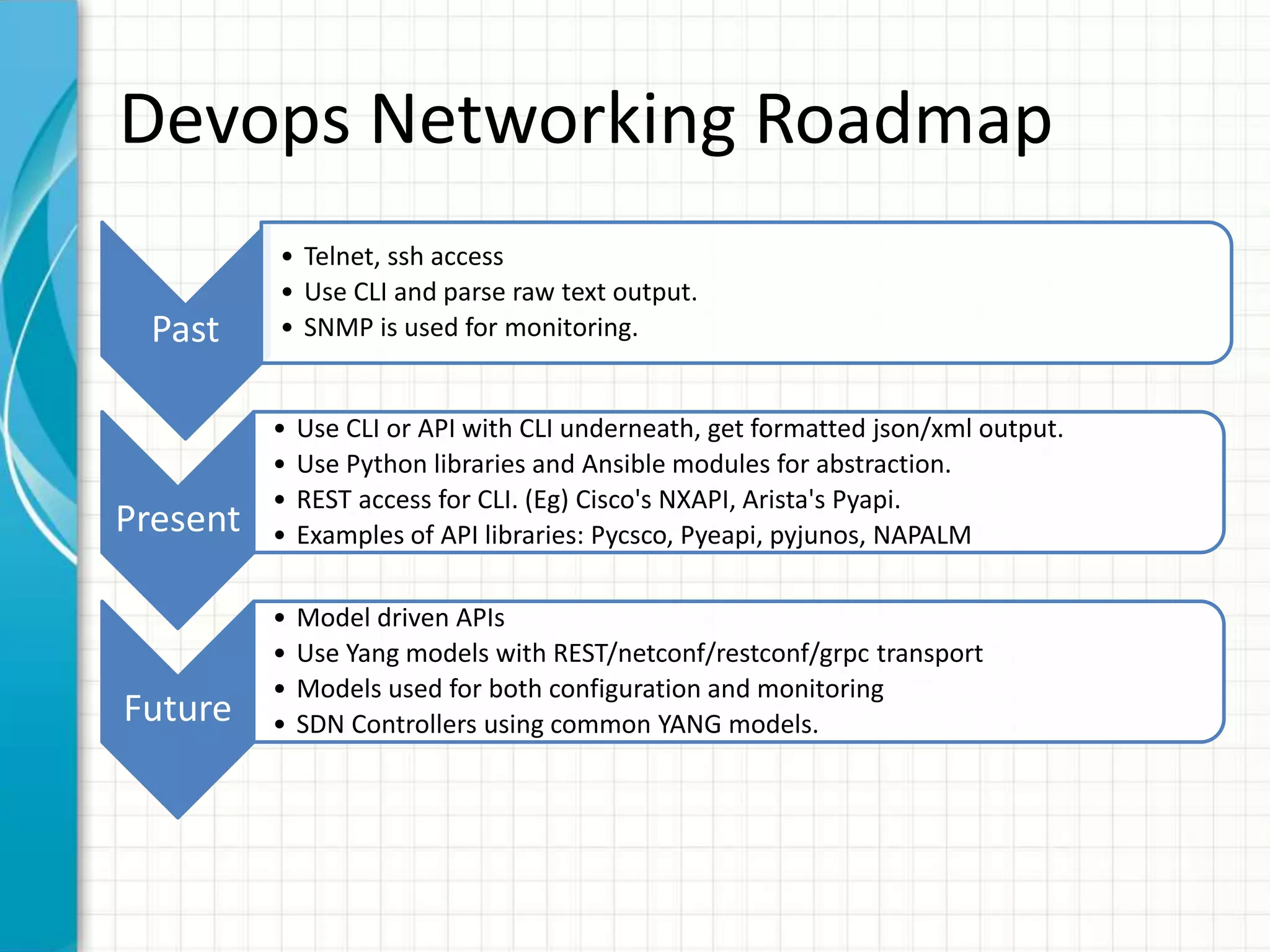
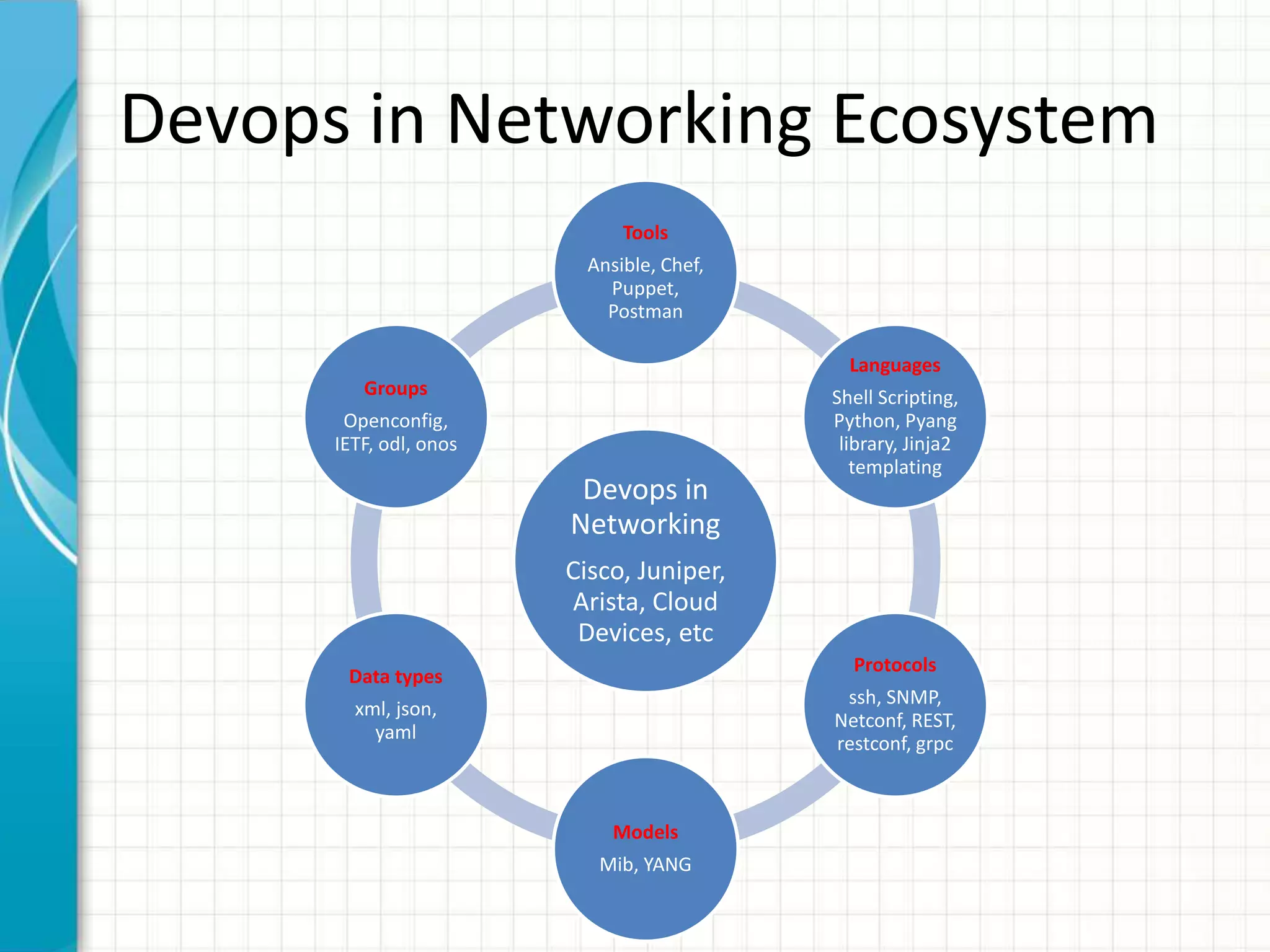
![Python Library and Ansible example
Read and Create vlans from Arista Device:
# start by importing the library
import pyeapi
# create a node object by specifying the node to work with
node = pyeapi.connect_to('veos01')
run_conf = node.running_config
print 'RUNNING CONFIG'
print run_conf
version_out = node.enable('show version')
print 'VERSION output', version_out
print 'My System MAC address is',
version_out[0]['result']['systemMacAddress']
# Get vlan endpoint
vlans = node.api('vlans')
# Get and print all vlan
vlan_out = vlans.getall()
print 'current vlans', vlan_out
# Create new vlan 1000
vlans.create(1000)
# Get and print all vlan
vlan_out = vlans.getall()
print 'current vlans', vlan_out
Get LLDP neighbors using Ansible from Cisco device:
Get_neighbors.yml:
---
- name: get neighbor data
hosts: 3k-grp1
connection: local
gather_facts: no
tasks:
- name: get neighbors
nxos_get_neighbors: type=cdp host={{ inventory_hostname }}
Execute playbook:
$ ansible-playbook get-neighbors.yml
PLAY [get neighbor data]
******************************************************
TASK: [get neighbors]
*********************************************************
ok: [n3k1]
ok: [n3k2]
PLAY RECAP
***********************************************************
*********
n3k1 : ok=2 changed=1 unreachable=0 failed=0
n3k2 : ok=2 changed=0 unreachable=0 failed=0](https://image.slidesharecdn.com/devopsnetworking-161105171418/75/Devops-in-Networking-8-2048.jpg)
